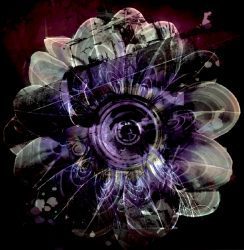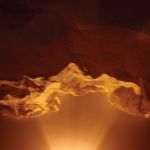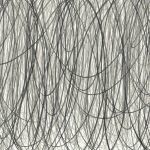With about 60 releases since 2000, the LINE (L-NE) IMPRINT label has built a firm reputation as “a programmatic sound platform with a strong inclination towards the visual arts and multimedia, born from the desire to take the tactile qualities of audio installations from the gallery space to listeners’ living rooms.”
Curated by Richard Chartier, LINE not only releases impressive sound art CD’s, but also DVD’s and Artwork Prints.
With its focus on audio/multimedia installations, mostly electronic by nature, LINE aims at the more ‘serious’ – investigative – listener: this is definitely no ‘pop-ambient’ label. If you insist on comparisions, the label may be best compared to Raster-Noton, in style and artistic approach.
At the start of 2013, LINE announced an impressive series of new releases, of which the new collaboration by William Basinski and Richard Chartier may obtain the most attention.
But in fact, the other releases deserve your attention as much. I’ve combined the four latest releases in these two posts, demonstrating the versatile output of the LINE label.
WILLIAM BASINSKI & RICHARD CHARTIER – AURORA LIMINALIS
Mentioning William Basinski will probably immediately raise associations with his ‘Disintegration Loops‘, a project about analogue tape deterioration which became history linked to the terrifying 9-11-2001 events, found its way into the Metropolitan Museum and recently was re-released in a massive box set with (O, Conceptual Irony!) remastered versions of the original (deteriorated) recordings.
But there’s a lot more in the Basinski discography apart from that.
Having worked together on the 2008 release ‘Untitled 1-3’, this is the second collaboration with Richard Chartier.
Aurora Liminalis may translate as ‘liminal light’ – of which the further interpretations may differ depending on what you want to hear.“… the aural equivalent of undulating trails of light. Disintegrating spatial shifts incorporating the two artists’ distinct sonic palettes mesh to create a slow, deep ebb and flow… like some melting spectral transmission.”
Stylistically, this is nothing like Basinski’s ‘Disintegration Loops’. But that is not entirely unexpected, since “Untitled 1-3” didn’t sound like them either).
The album starts from absolute quiet and slowly emerges, luring you to follow it while it grows into a deafening (yet still quiet somehow) noise. This is clearley not intended to be a background ambient drone: its subtleties only reveal if you carefully listen behind what’s going on up front. The result is organic: it is impossible to distinguish what is Basinski’s or Chartier’s specific input – a perfect blend of two sound artists interacting.

Richard Chartier – Recurrence
The very first LINE release was Richard Chartier’s “Series“, a work that explored “an implied silence that is not silent. a quietness that belies the activity and energy of the sounds.”
“Recurrence (series)”, the 51 minute second track of this album, reworks original elements from these recordings to an entirely new composition.
“Drawn to the original sounds Chartier felt that they could be re-composed. The form they have taken contains isolated and discreet events strewn across the sound field, creating a strange landscape and altered sense of space.”
It was presented on different occasions as a multi-channel event: listen to these sounds and try to imagine a 30-channel version of it!!
The album opens with the 20 minute track “Recurrence (Room/Crosstones)” which focusses on “room tones and other low frequency wave recordings”.And these are low frequencies indeed! Preferrably played back on a decent sound system since it won’t perform well on any average portable headset..

[Read Part 2 of the LINE special HERE]




